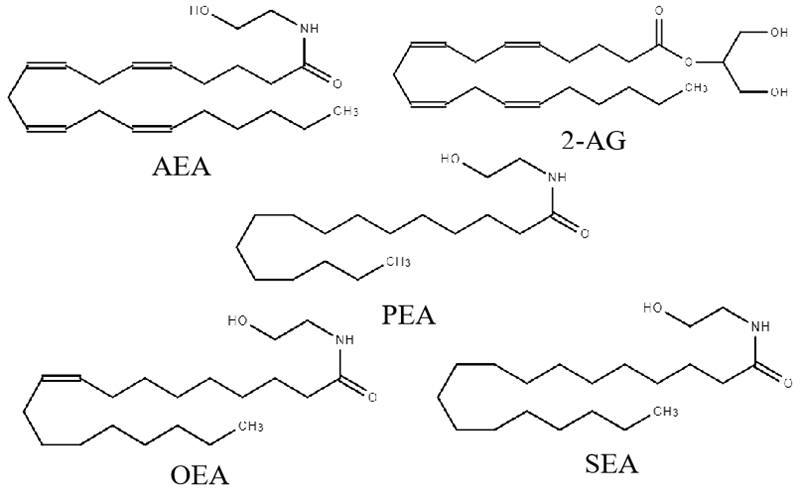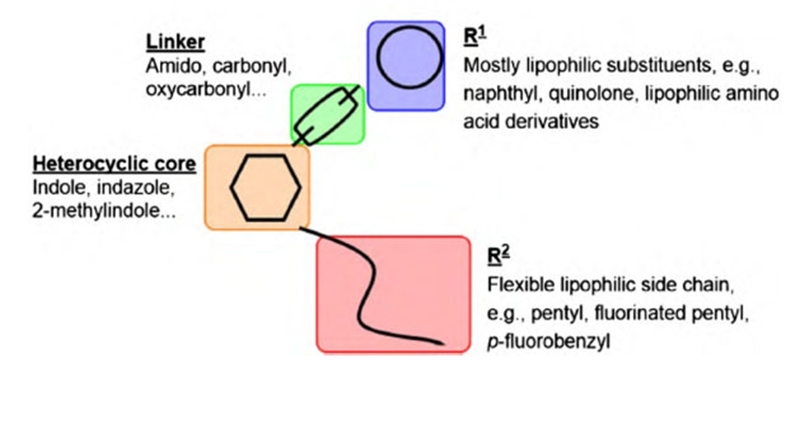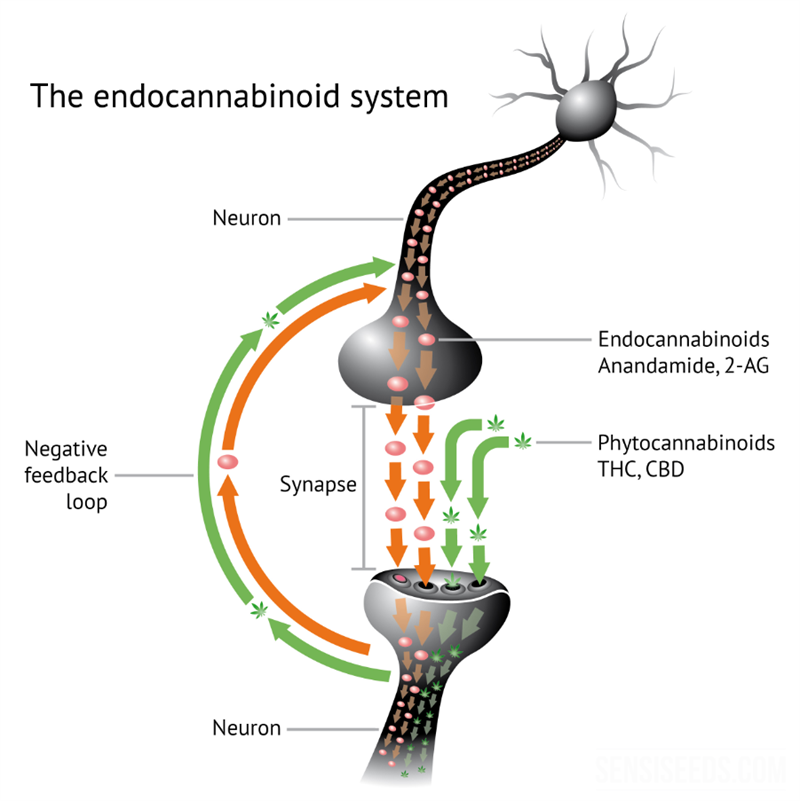
How Much Do You Know About Cannabis?

Cannabis
Cannabis, a traditional medicinal plant with a long history of global use, has been employed in China for millennia and cited in classical medical texts such as "Qian Jin Fang" and "Ben Cao Gang Mu." However, concerns over its misuse, which can lead to adverse psychological effects and addiction, have tempered enthusiasm for further cannabis research.
Internationally, cannabis is widely classified as a narcotic drug. Modern pharmacological research has identified cannabis as having analgesic, intraocular pressure-reducing, anticancer, antiemetic, memory-weakening, antihypertensive, antithrombotic, antimicrobial, and anti-inflammatory properties.

(Figure 1)
Cannabis contains over 100 isolated cannabinoids among its many secondary metabolites. These cannabinoids, including cannabidiol (CBD) and tetrahydrocannabinol (THC), are categorized based on their chemical structures into various types such as cannabinoid phenols, terpenophenols, tetrahydrocannabinols, chromenes, cannabigerols, and cannabinols (see Figure 1). THC, a psychotropic compound, interacts with cannabinoid receptors CB1R and CB2R to produce psychoactive effects. However, not all therapeutic effects of cannabis involve cannabinoid receptor activation; for example, its antiemetic effects are attributed to 5-HT receptor antagonism. CBD exerts antiemetic, anti-inflammatory, and neuroprotective effects through CB1R antagonism, TRPV1 receptor activation, inhibition of AEA hydrolysis, and activation of PPAR-γ receptors.
In professional terms, cannabinoids comprise a family of compounds that interact with cannabinoid receptors and are classified into phytocannabinoids, endocannabinoids, and synthetic cannabinoids.

(Figure 2 eCBs)
Endocannabinoids
Endocannabinoids (eCBs) are endogenous lipid-like molecules similar to natural phytocannabinoids found in the body, binding to cannabinoid receptors. In 1992, Israeli scientist Devane discovered cannabinoid receptors in the brains of rats and humans, isolating the first endocannabinoid, anandamide (AEA). Besides AEA, eCBs include 2-arachidonoylglycerol (2-AG), palmitoylethanolamide (PEA), oleoylethanolamide (OEA), and stearoylethanolamide (SEA). AEA and 2-AG directly bind to endocannabinoid system receptors CB1R and CB2R, thereby inhibiting the hypothalamic-pituitary-adrenal (HPA) axis activity, maintaining stable cortisol levels. PEA, OEA, and SEA enhance AEA's effects indirectly, contributing to HPA state regulation, possibly through inhibiting neuronal and alkaline cell deactivation of 2-AG or FAAH-mediated hydrolysis.
The primary mechanism through which eCBs regulate neural function is via retrograde signaling. Synthesized and released postsynaptically, eCBs traverse the synaptic gap to act on presynaptic receptors, inhibiting neurotransmitter release and thereby modulating synaptic excitability across multiple brain regions involved in reward, emotion, memory, and cognition.

(Figure 3 The Main Structure of Synthetic Cannabinoids)
Synthetic cannabinoids
Synthetic cannabinoids are a class of artificially synthesized substances that act on cannabinoid receptors in human cells. Their pharmacological effects are similar to natural cannabinoids like tetrahydrocannabinol (THC), serving as potent agonists targeting cannabinoid receptors CB1R and CB2R. Activation of CB1R, primarily expressed in the central nervous system and sometimes found on neuronal dendrites and soma, leads to typical cannabis psychoactivity. In contrast, CB2R activation, predominantly expressed in various immune cells, generally contributes to protective biological functions. Therefore, synthetic cannabinoids predominantly act on CB1R receptors.
Inhaling synthetic cannabinoids can induce hallucinogenic effects similar to THC. Some synthetic cannabinoids exhibit stronger effects compared to natural cannabinoids, posing risks of addiction and severe toxic side effects. Their molecular structure typically consists of four components: a head group (R1), a linker, a heterocyclic core, and a tail group (R2), with common structural features detailed in Figure 3.

(Figure 4)
The Endocannabinoid System
The endocannabinoid system (ECS), consisting of endocannabinoids (eCBs), cannabinoid receptors (CBRs), and enzymes responsible for eCB synthesis and degradation, is recognized for its pivotal role in neuro-modulation.
The ECS participates in various essential physiological processes including pain perception, emotions, stress response, motor coordination, and cognition. It has emerged as a therapeutic target for numerous diseases such as pain, epilepsy, anxiety, depression, Parkinson's syndrome, Huntington's disease, amyotrophic lateral sclerosis, stroke, cancer, substance dependence, glaucoma, autoimmune uveitis, osteoporosis, sepsis, and dysfunctions of the liver, kidney, intestine, and cardiovascular system.
The ECS influences multiple physiological activities by regulating neuronal function:
1. Modulation of Neuronal Development and Synaptic Plasticity: The ECS plays a critical role in the growth and development of neurons, including processes such as neurogenesis, gliogenesis, neuronal migration, synaptogenesis, and synaptic pruning. CB1R and AEA are crucial in human development, associated with cell differentiation and axonal growth in the central nervous system.
2. Regulation of Pain and Reward:Cannabinoids modulate pain through multiple targets, providing relief for various types of pain. The ECS also plays a crucial role in the rewarding effects of addictive substances, influencing preferences and relapse behaviors.
3. Regulation of Emotional and Memory Functions:The ECS participates in regulating anxiety and emotions, affecting the learning, retention, recall, and recognition of various types of memories. CB1R functions across multiple brain regions potentially modulate emotions and memory.
4. Regulation of the Immune System and Other Functions:The ECS is present in immune cells and can influence their activity. AEA can inhibit the release of pro-inflammatory cytokines, thereby modulating immune function. Additionally, the ECS is involved in regulating appetite, feeding behavior, and the physiological activities of multiple organ systems.
This system underscores its significance as a mediator of neurological functions and a potential therapeutic avenue across a wide spectrum of diseases and conditions.










